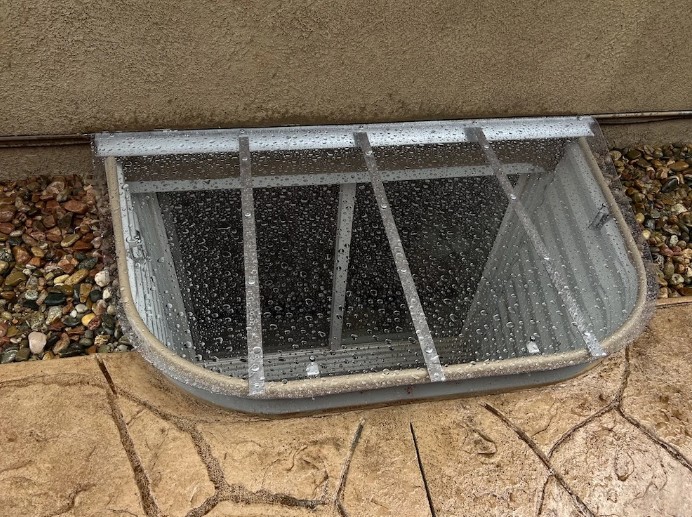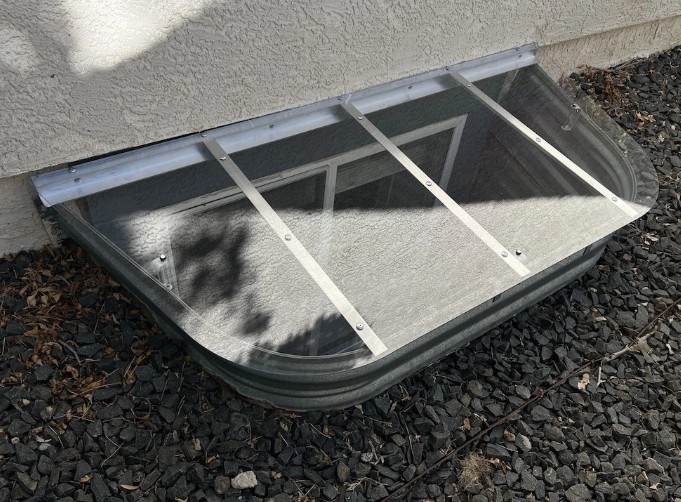Description: Window well cover maintenance in each season is vital for extending the lifespan of your investment and ensuring they function effectively over time.
Understanding Polycarbonate Window Well Covers
Polycarbonate window well covers are a durable and versatile solution designed to protect basement window wells from debris, water, and potential accidents. Made from strong, impact-resistant polycarbonate material, these covers provide excellent weather resistance while allowing natural light to pass through, maintaining the functionality of basement windows and emergency escape routes. They are lightweight, easy to install, and come in a variety of shapes and sizes to fit different window well designs. Additionally, polycarbonate covers enhance safety by preventing falls into open wells, making them a practical and long-lasting choice for homeowners. By covering window wells, they effectively prevent water infiltration during heavy rain and block snow accumulation during winter, reducing the risk of basement flooding. These window well covers also act as a barrier against dirt, leaves, and other debris, keeping the window wells clean and functional. Additionally, they serve as a deterrent to small animals and pests that might otherwise find their way into the home through open or unprotected window wells.
How Season Changes Impact Window Well Covers and Their Maintenance Needs
In general, window well cover maintenance is minimal to ensure their durability and performance, even with seasonal changes that can impact their condition. During winter, the accumulation of snow and ice can add significant weight, making emergency egress more difficult with frozen components or blocked egress. The risk of heavy snowslide off of roofs can also cause stress, damage, or cracking. Spring and fall bring debris such as leaves, dirt, and branches, which can clog drainage and reduce visibility. Summer exposes the covers to the most intense UV rays of the year, which weaken the material. Despite radical temperature fluctuations and extreme elements, polycarbonate window well covers stand the test of time. Later in the article we will explore how a few simple seasonal inspection and window well cover maintenance tips are crucial for ensuring safety and weather resistance throughout the year.
The Importance of Window Well Cover Maintenance
Proper window well cover maintenance is crucial for protecting your home and ensuring the safety of your family. By preventing debris buildup l, well-maintained window well covers help to avoid water leaks during heavy rains, safeguarding your basement from potential flooding and costly water damage. Doing an annual inspection to ensure covers are properly sloped and not deformed can make all the difference in an intense storm by ensuring your window well does not flood. Additionally, keeping these covers in good condition is essential for preventing accidents, as they create a barrier that helps protect children and pets from falling into uncovered wells. Regular inspections and cleaning not only prolong the life of your window wells but also provide peace of mind, knowing your home and loved ones are safe.
Window well cover maintenance in each season is vital for extending the lifespan of your investment and ensuring they function effectively over time. Regular upkeep, such as cleaning off debris and inspecting for cracks or signs of wear, can prevent small issues from escalating into costly repairs or replacements or unsafe egress. Additionally, well-maintained window well covers contribute to the curb appeal of your home, keeping the exterior tidy and cohesive. This attention to detail can also help maintain or even enhance your property value, as prospective buyers often appreciate signs of diligent home care. Balancing practicality and aesthetics, maintaining these covers is a simple but impactful way to protect your home and its overall worth.
Simple Seasonal Window Well Cover Maintenance Tips for Polycarbonate Window Well CoversSpring: The Season of Renewal and Stress
Spring brings its own set of challenges and risks for polycarbonate window well covers to mitigate due to heavy rains and the potential for flooding. Excessive moisture can lead to the accumulation of mold, mildew, and debris on the covers, which not only impacts their appearance but can also reduce their durability over time. To ensure optimal performance, window well cover maintenance during spring should include a thorough cleaning to remove any built-up dirt and organic matter, inspecting for cracks or wear caused by fluctuating weather conditions, and ensuring the covers are securely fitted and sloped to prevent water seepage. Regular checks will help maintain the clarity and functionality of the covers, keeping basements dry and protected throughout the season.
Summer: Sun, Heat, and Expansion
UV damages everything from skin and clothes to the paint on cars and yes, polycarbonate window well covers. UV radiation can cloud or yellow polycarbonate, reducing its clarity and light transmission. Without a special UV treatment, polycarbonate will brittle and discolor in 3-5 years. Extreme heat can also deform the material if not reinforced with metal bracing or supports, affecting its fit and function. Warped coverings may let debris or water in, lowering window well protection. Quality window well covers will have a metal frame to help keep their shape and structure. Summer inspections can detect UV damage or warping early, ensuring adequate maintenance and minimizing long-term difficulties.
Rising temperatures and prolonged sun exposure can cause polycarbonate window well covers to overheat the window well and limit airflow in summer. To avoid these concerns, make sure your window well covers are firmly fitted but not unduly sealed to allow ventilation to regulate interior temperatures. The covers can be cleaned routinely with mild soap and water to eliminate debris that blocks light and airflow. UV-resistant coatings decrease summer sunlight-induced material degradation. Proper window well cover maintenance in summer is truly minimal.

Fall: Leaves, Debris, and Sudden Weather Shifts
Fall is the best time to prepare your window well covers for winter storm season. Secure the covers to prevent them from shifting or detaching during high winds. The best advice for fall is to do a quick wipe down of the summer spider webs, remove any minor debris build up that the window blew in after the leaves fell, and if you have it installed, engage an egress friendly quick release locking system to prevent wind from blowing the covers off in a big storm. lock With the days getting shorter and daylight becoming more precious, consider an optional . washing with mild soap and water as a part of the fall window well cover maintenance plan.
Winter: Snow, Ice, and Extreme Cold
Heavy snow loads are no joke when it comes to window well covers. However, polycarbonate covers excel in window conditions. Unlike glass or cheaper plastics, it stays impact-resistant even in freezing conditions, meaning snow shovels, hail, or heavy drifts won’t easily crack it. Its UV protection prevents brittleness, so it doesn’t snap when temperatures drop. Plus, the smooth surface sheds snow and ice more easily than metal grates, keeping window wells clear without trapping moisture. But there are still precautions and maintenance tips one should take.
The freeze-and-thaw cycles of winter can cause water and ice build up on components that attach the cover to the well. Regular inspection for easy and unhindered egress should be done with every storm. A thorough winter window well cover maintenance will also include clearing major snow accumulation. Regular snow and ice removal minimizes weight that makes emergency exit dangerous. Covers free from major snow and ice perform better and are much safer with regular upkeep.
Choosing the Right Polycarbonate Window Well Cover
Many people wonder if Colorado’s wild temperature swings damage polycarbonate window well covers? Not really. Polycarbonate naturally expands in the heat and contracts in the cold, but it’s engineered to handle those cycles without losing strength. The bigger factor in long-term durability is UV exposure, which can slowly wear down untreated plastics. That’s why quality covers use UV-protected polycarbonate and aluminum bracing—so they stay clear, strong, and stable year after year through blazing summers, freezing winters, and the big swings in between.
Fabrication matters too. Wise design includes oversized fastener holes, wide-head rivets, and quality locking system so the cover can flex with the seasons without cracking at stress points. Pairing premium UV-treated polycarbonate with corrosion-resistant aluminum frames ensures a secure fit and lasting clarity. In short, the right materials and construction practices mean your covers will handle Colorado’s climate with ease.
When choosing the right polycarbonate window well cover, thickness and strength are critical factors to consider. A thicker polycarbonate cover not only provides superior durability but also offers better resistance to impacts, such as debris or heavy snow. The strength of the material ensures that the cover can bear weight and withstand harsh weather conditions without cracking or warping.
By paying attention to these features, you not only improve functionality but also simplify window well cover maintenance, ensuring your investment remains effective for years to come.
